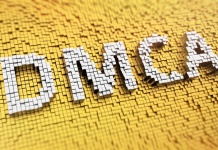 An article in Knowledge @Australian School for Business discusses the fact that the present Internet addresses system, known as IPv4, will have literally used up its 4.2 billion addresses soon:
An article in Knowledge @Australian School for Business discusses the fact that the present Internet addresses system, known as IPv4, will have literally used up its 4.2 billion addresses soon:
APNIC, the Asia Pacific Network Information Centre, is the registry that issues Internet addresses for the booming Asia-Pacific region, and is expected to be the first to run out. Registries in other regions may last just a few months longer.
The article’s writers describe the new address system, IPv6, and its 340 billion billion billion addresses, as the system that will save the Internet from the end of capacity. It recommends that companies start developing their IPv6 systems before it’s too late to add to IPv4. It does, however, caution that the IPv6 system will be incompatible with the IPv4 system, creating–what else?–two IP systems running concurrently, and forcing businesses and consumers to straddle the worlds of both IP systems, new and old, at least for a good while. You thought the Browser wars were a pain.
Actually, browser users probably won’t have to worry: Most ISPs are either planning on rolling out IPv6, or have already experimented with it. ISP customers may see no difference whatsoever with their web access. But if you produce a web site, you might want to see what your ISP or IT staff is doing about IPv6, and whether you’ll need to take any steps on your site to accommodate it.
And how does this affect ebooks, you ask? Well, since every item that connects to the Internet needs its own IP address–including your ebook reading device or cellphone–the switch to the IPv6 system is supposed to allow for unprecedented communications between your many devices and the Internet, including some connections you may not have thought of… but clearly somebody did.
In Japan, for instance, some of the taxis have IPv6 addresses in their windscreen wipers. When taxies turn on their wipers, the cab company knows and can send lots of cabs to the area because it’s raining. “There are so many opportunities for other sorts of business and what you can do in terms of communication,” says (executive director of the Internet Society of Australia, Holly) Raiche.
The suggestion here is that ebook reading devices and cellphones, for example, may be able to contact a book outlet when it knows you’ve finished a book, or looked up an author or phrase, in order to sell you a new book. Doesn’t sound too bad. But it also suggests that device might be able to contact the outlet (or… bum bum bummm… someone else) if you copy that ebook and give it to someone else, or post it online. Hey, at least that would solve the DRM problem…
Of course, these same organizations are talking about using those 340 billion billion billion IP addresses and giving them to every item on a store shelf, every electronic device in your home (even light bulbs and cables), every public piece of infrastructure, adding them to every device on your desk (“Attention: You are out of staples. I have ordered a box for you.”), etc, etc. If they do that, how long before we need an IPv8 system and another few billion billion billion billion billion billion addresses?
Bottom line, we should expect ground-breaking changes in our electronic devices… at some point. Maybe soon. Maybe not. Bookmark this spot.

































Don’t expect IPv6 to come into full use for a long time. A very long time. For things like the Taxi wipers you were talking about, it’s perfect, because you can guarantee both ends of the system are IPv6 and there’s no problem.
But for the normal Internet, because of the way IPv6 was implemented, there is no way to translate one into the other, so every server and client is going to keep needing an IPv4 address as well until every other client or server you might want to talk to (ie the whole internet) has switched. There’s plenty of ways around the limited IPv4 numbers that already work with everything that’s out there now, so there is very limited incentive for anybody to make the effort to set up IPv6 when you still need an IPv4 address as well, and that’s all you need.
If we ever do go to IPv6, don’t expect to run out them soon. There’s way more addresses for each person on earth in IPv6 than the total for IPv4.
I’m not sure what you are talking about, Stephen. IPv6 is one of the better-engineered protocols (along with SCTP), and a lot of thought has been put into the transition process. IPv6 can communicate with IPv6 across IPv4 networks, IPv6 computers can access IPv4 servers, and, admittedly with more contortions, an IPv4 computer could access a web site (and other simple resources) on IPv6.
I think what we’ll see is big servers continue on with both IPv4 and IPv6 addresses, but home computers will be forced to be on IPv6 networks due to exhaustion. This has already started to happen in other countries, but in the US even large companies resist making that jump by forcing their customers onto a NATed address.
With respect to this article, it seems a little strange. Sure IPv6 includes IPsec which includes authentication, but I’ll be stunned if we ever see wide deployments of IPv6 addressing as identity. Moving homes, multiple devices, multiple people using the same device, ensuring that authentication took place with a trustworthy source … these problems don’t go away with a new addressing scheme. No, we’ll probably see an ebb and flow of the current single sign-on (via something like Facebook’s new services) and unique account mechanisms.
Sorry, I know the above is a bit of a mess, but these are really gigantic topics, and I’m trying to cram them into too few words in very little time.
@Logan, feel free to take the time you need to express yourself. I consider this an important enough topic to warrant serious discussion, and we should have all the facts we can get to do that.
As mentioned, IPv6 isn’t something the end user will see for a long time. Furthermore, nearly all of the burden is on the ISPs and large companies’ network engineers.
Network Address Translation (NAT) will be a problem for end users if ISPs decide to use this it instead of IPv6. This is where users will get a private IP address (or public IPs will be reused) and the inside address will be translated to a “real” IP or IPv6 address at the ISP’s gateway to the internet. This type of setup will not be a problem for users that only access the web, but some services may have problems and any servers inside the home will not be accessible (who doesn’t have their own web server at home)!
IPv6 in the home will not be a problem unless very old hardware and software are used. Most likely, the home router will support IPv4 to IPv6 NAT. I’m most interested in how many IPv6 addresses end users are likely to get. There will be 6e23 IPv6 addresses per square meter on the planet. I’ll want my share 😉
@Steven, let’s just go into the issues I raised, then: change in geographic location, associating multiple devices to a single person, associating multiple people to a single device, and determining trust. Any thoughts?
@Zeke, you’ll get a lot, but it doesn’t work quite like you say. (Disclaimer: I am not an expert in IPv6 deployment.) In essence, the addresses are broken into multiple parts, with the last 64 bits being an interface identifier filled in by the device and the first 64 bits being assigned by your ISP. Thus, even if your ISP gave you only one “address” (as happens today), you’d still receive more effective addresses than currently exist for the Internet today as a whole. As Keanu would say, “Woah!”
@Logan: “Any thoughts?”
The one thing rarely discussed here is the number and size of the databases that will have to hold all of this data and make sense and good use of it… that will be the first real challenge of IPv6. It should be “fun” to watch…
I’m not an expert on IPv6 either (obviously), but there should be a way to designate with a single digit of the system a geographically-independent address. I’m not sure why any single entity needs to keep track of all the IPs assigned to an individual. The IPs are assigned systematically (one would hope), and the organizations directly related to the items keep track of their items’ IPs.
I can see a government organization assigned the duty of monitoring the IPs of all safety and/or hazardous devices in a household.
Assigning an address to multiple people should also be handled by whatever organization keeps track of that particular address… IOW, if Sears is monitoring the IP of a home heating system, Sears keeps track of all the family members to be notified if there’s a problem.
How do these organizations and entities know about new things? I’d assume the act of plugging them in would send out a digital “flare,” alerting the appropriate agencies to add this to their systems. Or maybe your home network would actually do that job upon encountering something new on the network, and incidentally give the homeowner a list of choices in connecting to the outside world–or not, if you desire–and what info will be exchanged… much like a computer will react to a new USB device plugged into it, and offer a set of choices on how to respond.
Trust will be the same problem it is today, and the need for firewalls, antivirus strategies and credential verification will be as important as ever. I’m not sure how much larger the issue will become with more items to monitor, but I’d guess a home firewall should be able to handle it. The home system would essentially act as a node for a great deal of the tasks described, hopefully reducing the load on outside servers and making the entire process more manageable.